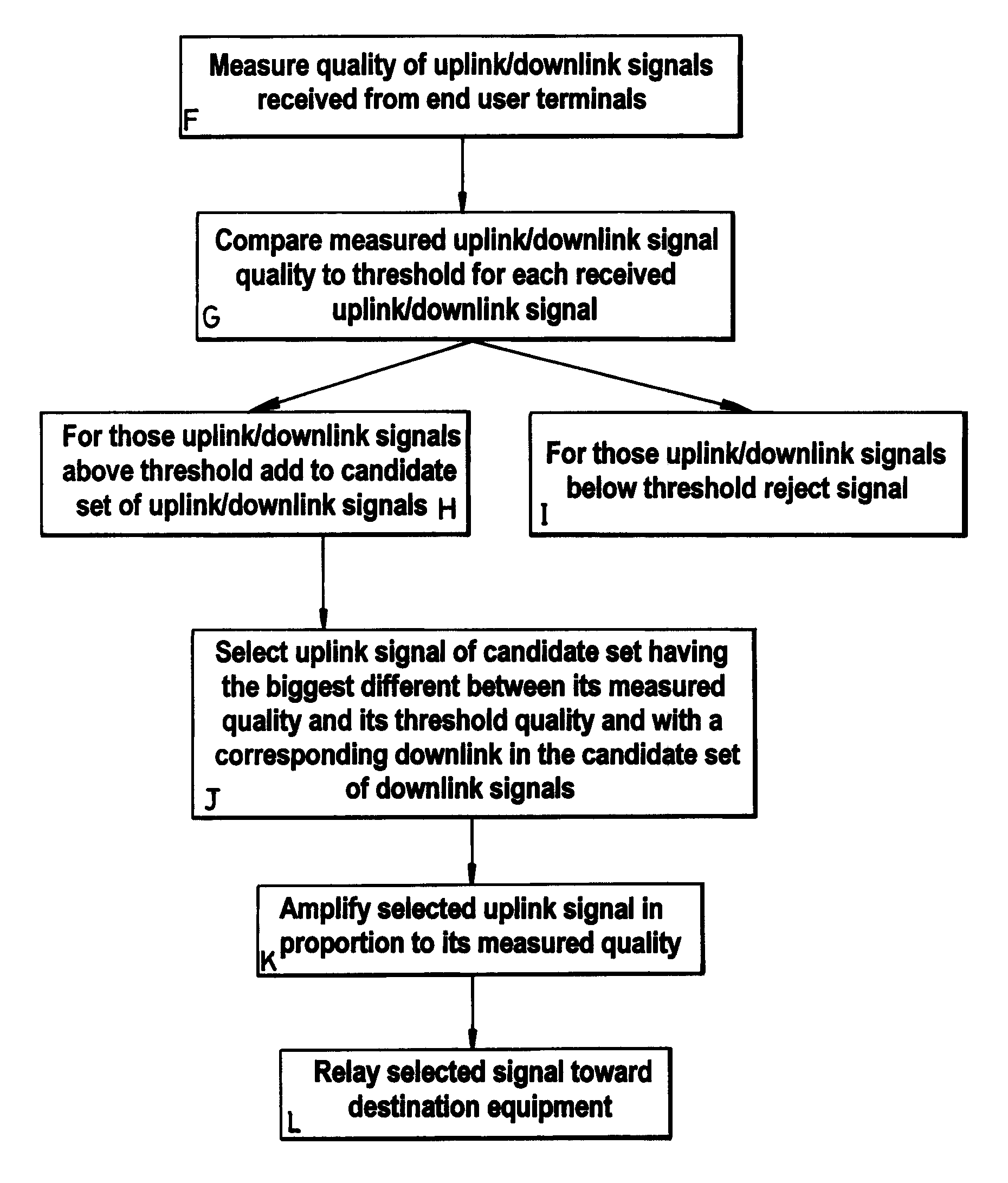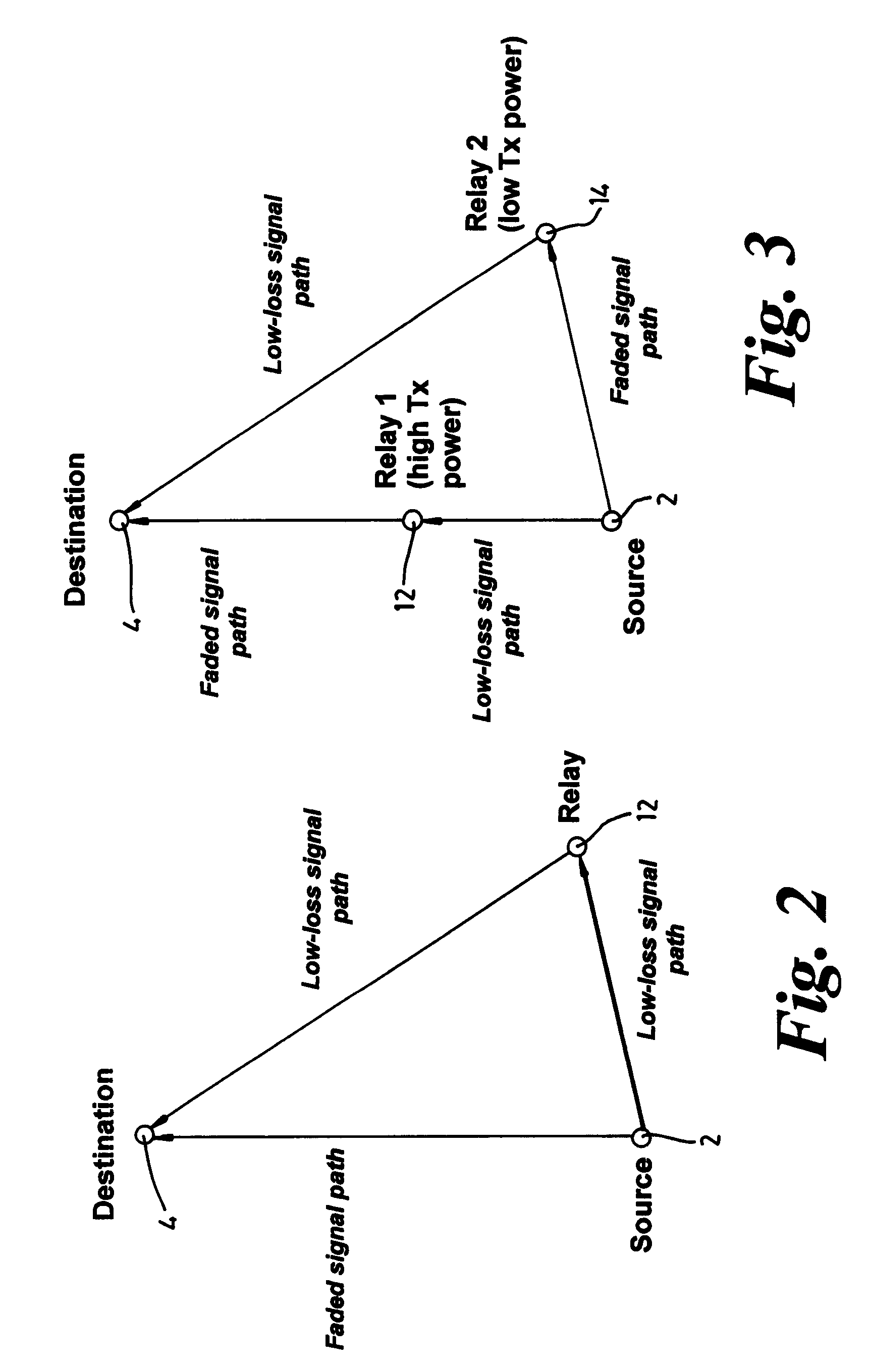Multi-hop wireless communications system having relay equipments which select signals to forward
a wireless communication and relay equipment technology, applied in the field of multi-hop wireless cellular communications systems, can solve the problems of inability to direct communication with the base station, low data rate, inability to respond to rapidly changing propagation conditions, etc., and achieve the effect of reducing the amplification of nois
- Summary
- Abstract
- Description
- Claims
- Application Information
AI Technical Summary
Benefits of technology
Problems solved by technology
Method used
Image
Examples
Embodiment Construction
[0034]There will now be described by way of example the best mode contemplated by the inventor for carrying out the invention. In the following description, numerous specific details are set out in order to provide a complete understanding of the present invention. It will be apparent, however, to those skilled in the art that the present invention may be put into practice with variations of the specific.
[0035]One aspect of the present invention are the mechanisms by which relay equipments are chosen from the many that may be available for a communication and the way in which the communication paths between source and destination equipments, via relay equipments are set up and maintained.
[0036]FIGS. 2 to 4 and 6 to 8 are used to describe embodiments of the present invention relating to an uplink, in which the source equipment is a mobile end user terminal (2) and the destination equipment is the base station (4) of the cell (6) in which the mobile terminal is located. The mobile ter...
PUM
 Login to View More
Login to View More Abstract
Description
Claims
Application Information
 Login to View More
Login to View More - R&D
- Intellectual Property
- Life Sciences
- Materials
- Tech Scout
- Unparalleled Data Quality
- Higher Quality Content
- 60% Fewer Hallucinations
Browse by: Latest US Patents, China's latest patents, Technical Efficacy Thesaurus, Application Domain, Technology Topic, Popular Technical Reports.
© 2025 PatSnap. All rights reserved.Legal|Privacy policy|Modern Slavery Act Transparency Statement|Sitemap|About US| Contact US: help@patsnap.com



